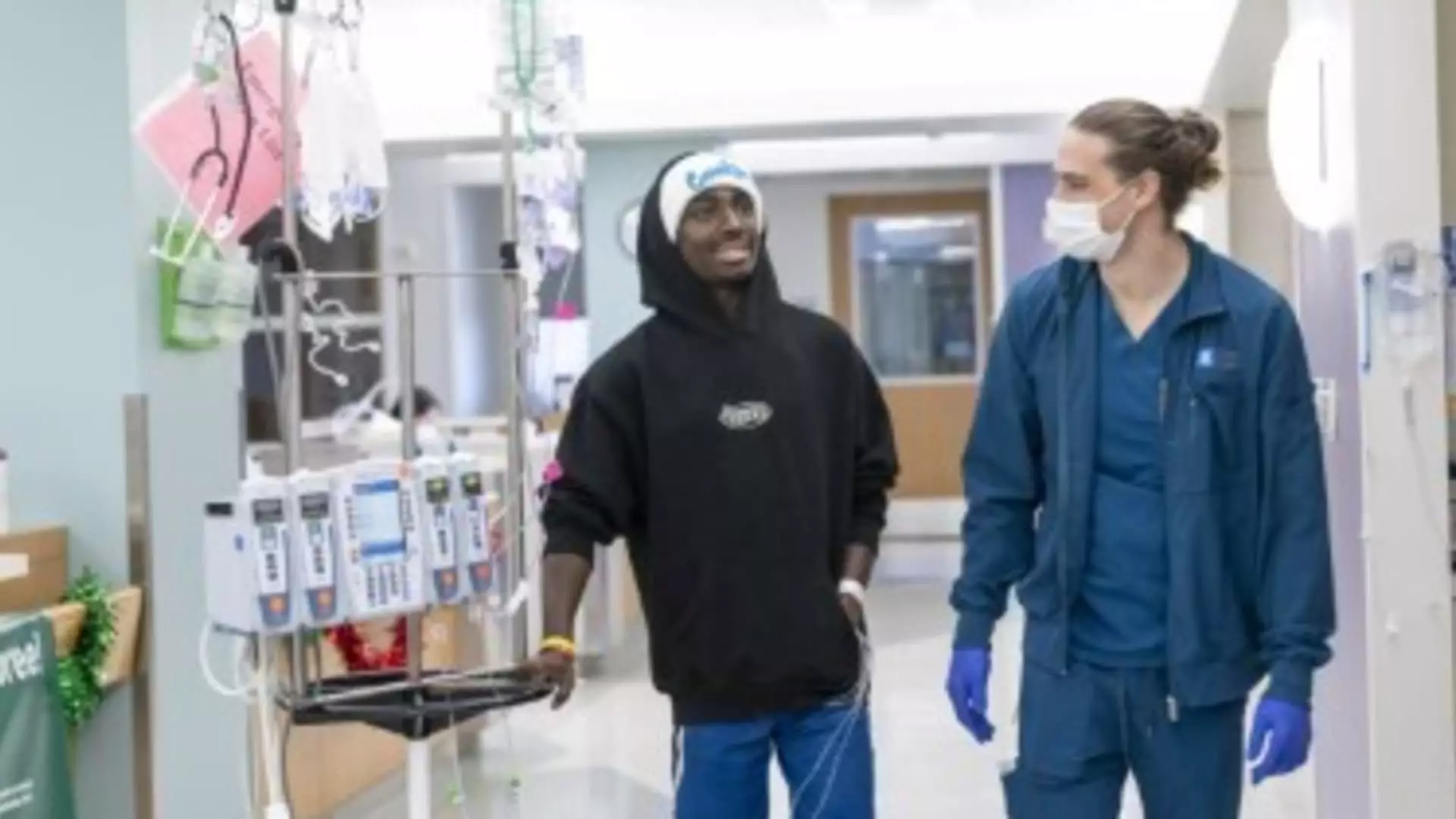Sickle cell disease is a hereditary blood disorder that introduces immense challenges to those who carry it. Among its many struggles are bouts of severe pain, frequent hospital visits, and a staggering impact on quality of life. Deshawn “DJ” Chow, a 19-year-old patient, exemplifies the harrowing journey that individuals with sickle cell endure. Despite the oppressive nature of his condition, new gene therapies being developed for sickle cell offer a flicker of hope—a new dawn for countless patients.
DJ Chow’s experience is notably one of resilience, but it is also one that underscores the transformative potential of innovative medical treatments. Since the approval of new sickle cell gene therapies by the Food and Drug Administration (FDA) over a year ago, patients like Chow have gained access to treatments that aim to eradicate the disorder at its genetic roots. The treatment DJ underwent, known as Casgevy, is manufactured by Vertex Pharmaceuticals and represents a watershed moment in medical science. However, with an astonishing price tag that exceeds $2 million per patient, accessibility remains a significant concern. This prompts one to ponder: who gets to benefit from these high-cost treatments?
What makes gene therapy exceptional is its potential to alter the trajectory of sickle cell disease for individuals before it wreaks havoc on their bodily systems. As DJ discovers the joys of pursuing activities like surfing and snowboarding—pastimes previously hampered by his condition—one cannot help but feel that gene therapy represents more than just medical treatment; it symbolizes the reclaiming of a lost childhood.
Despite the promise of new therapies, the road to accessibility is fraught with hurdles. For many, including DJ Chow, navigating the complex insurance landscape is daunting. Although his family found relief in their employer-sponsored health plan, they remain among the fortunate few. In the greater context of sickle cell disease, which impacts over 100,000 Americans, the rollout of gene therapy has been slow. As of late last year, only around 100 patients had undergone treatment.
Hospitals face a steep learning curve when coordinating with insurance providers—an issue that could hamper the success of these innovative therapies. Jennifer Cameron, the executive director of patient access at Children’s National Hospital, noted that early attempts to secure coverage were fraught with complications, requiring extensive education of insurers about the billing processes and costs involved. The bureaucratic challenges in healthcare systems can stifle the dream of a pain-free existence for many patients, pushing life-altering treatments out of reach.
A Rapidly Changing Industry Landscape
Insurance executives are beginning to recognize the urgency of developing new payment models that could address the intricate financial challenges posed by sickle cell treatments. David Joyner, CEO of CVS Health, emphasized the need for creative financial solutions to alleviate the exorbitant costs associated with gene therapies, stating, “Today’s payment model is not constructed to spread the cost.”
As state Medicaid programs grapple with the affordability of these treatments, the risks and benefits of gene therapy need thorough evaluation. Research from institutions like Oregon Health & Science University illuminates the state’s financial burdens, estimating that regions with significant sickle cell populations could face challenges with state budgets despite attempts at reductions through incentives or federal support.
Historically, Medicaid has been a crucial lifeline for patients with sickle cell disease, with more than 50% of those affected covered by this governmental program. Unfortunately, future funding cuts and reduced staffing at health agencies add a layer of uncertainty for patients relying on these vital services, further complicating the landscape for treatment access.
Though the gene therapy landscape is promising, the complexities in both the healthcare system and financial considerations render it somewhat precarious. The potential for improvement in health outcomes for individuals like DJ Chow is, without a doubt, commendable—but it carries with it the weight of public policy and financial logistics that can diminish its effects.
Key figures, like Health and Human Services Secretary Robert F. Kennedy Jr., underscore a commitment to establishing pathways for research and treatment coordination, yet the explicit policies around funding for such treatments remain murky. As decisions are being made at higher levels of government, the voices of families affected by sickle cell disease must not be drowned out.
Families like the Chows must remain advocates not only for their children but for the collective whole, pushing for access to therapies that could redefine what living with sickle cell disease can look like. As the unsettling journey of navigating healthcare and costs continues, the hope for a brighter future shines dimly yet undeniably clear, reminding us that medical science could indeed reshape destinies.

